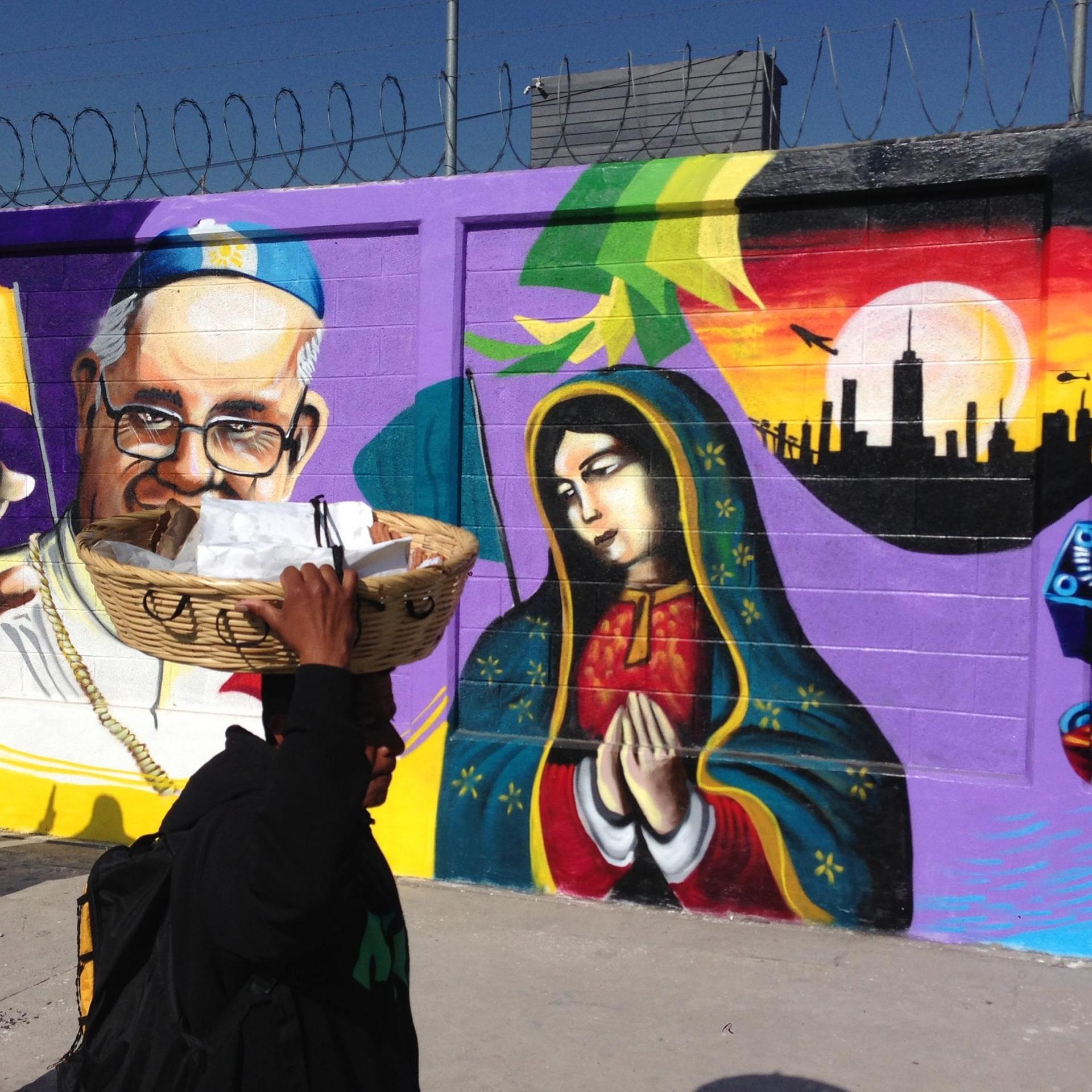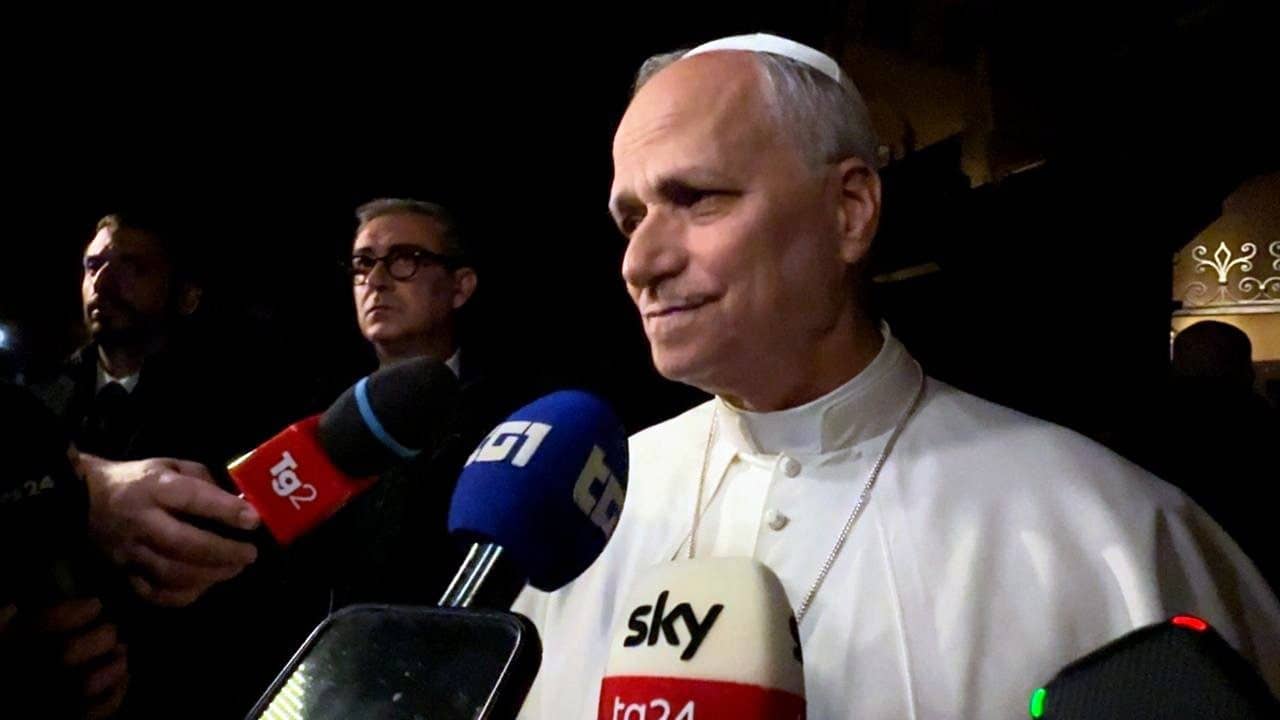Pope Francis began his Feb. 12-17 pilgrimage to Mexico with a Mass at the Basilica of Our Lady of Guadalupe. It houses a miraculous image of Mary, which she left in 1531 after requesting that “a temple be built on this hill” so she could express her maternal concern for the people of the land.
Francis had expressed a deep desire to pray before the image in private. After Mass he was led to the back room of the basilica, where it’s encased. Those of us inside the basilica were not able to leave for security reasons, so we prayed for Francis while he venerated the image. I was expecting he would do so for five or ten minutes; in the end, he prayed for a full 25 minutes.
Here began his journey – with a personal dialogue with Mary, through her famous image. The legacy of Guadalupe would shape his message for the rest of the trip.
While in Mexico City, Francis addressed government officials and the bishops of Mexico. To government officials, he emphasized their responsibility to provide structures and space so individuals and families can live in peace and prosper. To the bishops, he reiterated his desire that they be shepherds rather than princes.
He also visited a children’s hospital, where he encouraged and comforted children suffering from various maladies.
The following day, Francis celebrated Mass for 400,000 people in Ecatepec, a sprawling suburb of Mexico City. The Mass was followed by a gathering with families, where the Argentine pontiff encouraged them to be “schools of love and virtues” that allow individuals to grow and learn to give themselves generously in service.
In the southern state of Chiapas, Pope Francis celebrated Mass with various indigenous groups. Scripture readings were proclaimed and hymns sung in native languages. Francis spoke of the need to respect native cultures and ways of life. He highlighted their tradition of respect for the environment as an example for the rest of the world.
Next, Francis visited the troubled state of Michoacán. The city of Morelia has been “ground zero” for the disintegration of Mexican society, where the government has failed to protect citizens; law and order are severely compromised, as organized crime controls swaths of the territory. Francis’ presence in Morelia, therefore, was most significant, as he encouraged a bruised and wounded society.
Here, Francis would meet with young Catholics and encourage them not to give up hope. He encouraged them not to give in to the temptations of despair, of violence, of drugs, of crime, but rather to develop their God-given talents and to share them.
Francis’ final stop would be the border city of Ciudad Juarez, which abuts Texas and New Mexico. Here Francis met prisoners and business leaders before celebrating Mass for 250,000 near the border with El Paso, Texas.
The border is a location that’s been the subject of much controversy. Before Mass he approached the fence and prayed quietly at a cross, remembering the thousands who have suffered and died migrating northward. He greeted and blessed Church officials, handicapped, and migrants on the other side, in El Paso, Texas.
At Mass he prayed for a city that has suffered brutal violence at the hands of gangs and cartels. Many survivors fled for safer places such as El Paso. Francis spoke of a light not overcome by darkness, encouraging the city to hold fast to hope.
In this Holy Year of Mercy, the Holy Father spoke movingly of this virtue: “Herein lies the mystery of divine mercy,” he said. “It seeks and invites us to conversion, it invites us to repentance; it invites us to see the damage being done at every level. Mercy always pierces evil in order to transform it.”
Pope Francis’ addresses in Mexico were not ad hoc. Rather, they were integrally related.
He began with the miracle and message of Guadalupe, which is more relevant now than ever in a country deeply wounded by corruption, exclusion, a volatile economy, despair, drugs, violence, and emigration. One vice leads to the next, corruption to exclusion to a volatile economy, and so forth.
Francis did not, however, simply point out deficiencies in Mexico’s fragile society – that’s depressingly easy to do. Rather, he offered a way forward: investing in human capital; strengthening families through policies and programs; building a culture, economy, and government of inclusion.
In effect, what Pope Francis did in Mexico was to reenact the legacy of Our Lady of Guadalupe, asking once again that a temple be built for the people of the land – only in this case, not a basilica of stone, but a society based on dignity, life, security, and peace.
He was, indeed, a missionary of mercy.
Bishop Oscar Cantú leads the Diocese of Las Cruces, New Mexico, and is chairman of the Committee on International Justice and Peace of the U.S. Conference of Catholic Bishops. He was one of two official representatives of the U.S. bishops to Pope Francis’ February 12-17 apostolic journey to Mexico.

















